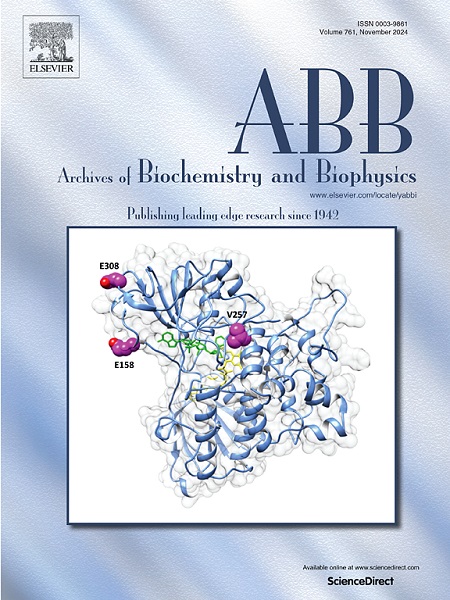Crystal structure, biophysical characterisation, modeling and docking studies of bL12 ribosomal protein from Mycobacterium tuberculosis
IF 3.8
3区 生物学
Q2 BIOCHEMISTRY & MOLECULAR BIOLOGY
引用次数: 0
Abstract
Tuberculosis (TB) is a fatal infectious disease caused by Mycobacterium tuberculosis (Mtb), with high rates of relapse and mortality worldwide. The Mtb stalk protein bL7/bL12 is a component of 50S ribosomal subunit, and plays a crucial role in the translation process during protein synthesis. The bL7 differs from bL12 by the presence of an acetyl group at its N-terminal region. In this study, the bL12 gene from Mtb was cloned into prokaryotic expression vector pET-28a(+), then expressed, purified, characterised and crystallised using the vapour diffusion method. Rod-shaped crystals of bL12 were obtained, which diffracted to 1.5 Å resolution at 100 K, with an Rmerge of 0.025. The bL12 crystallised in the P22121 space group with unit cell dimensions a = 25.86 Å, b = 47.27 Å, c = 61.07 Å, and α = β = γ = 90°. The compact, globular C-terminal domain consists of β1-α1-α2-β2-α3-β3 fold. The bL12 protein was further characterised using various biophysical techniques: CD, SEC, DLS, DSC, DSF and fluorescence spectroscopy. Structural modeling and docking of bL12 protein with its interacting partners in the ribosome were performed using HDOCK and AlphaFold3. The resulting data were analysed to gain insights into its functional role. This structural information on the Mtb bL12 protein enhances our understanding of translational biology and contributes to structure-based drug design efforts targeting tuberculosis.
结核分枝杆菌bL12核糖体蛋白的晶体结构、生物物理特性、建模和对接研究
结核病(TB)是一种由结核分枝杆菌(Mtb)引起的致命传染病,在世界范围内具有很高的复发率和死亡率。Mtb柄蛋白bL7/bL12是50S核糖体亚基的一个组成部分,在蛋白质合成的翻译过程中起着至关重要的作用。bL7与bL12的不同之处在于其n端区域存在乙酰基。本研究将结核分枝杆菌bL12基因克隆到原核表达载体pET-28a(+)中,采用蒸汽扩散法进行表达、纯化、表征和结晶。得到了bL12的棒状晶体,在100 K下衍射到1.5 Å分辨率,Rmerge为0.025。bL12在P22121空间群中结晶,晶胞尺寸为a = 25.86 Å, b = 47.27 Å, c = 61.07 Å, α = β = γ = 90°。紧凑的球状c端结构域由β1-α1-α2-β2-α3-β3折叠组成。利用CD、SEC、DLS、DSC、DSF和荧光光谱等多种生物物理技术进一步表征了bL12蛋白。利用HDOCK和AlphaFold3进行了bL12蛋白与核糖体中相互作用伙伴的结构建模和对接。分析所得数据以深入了解其功能作用。Mtb bL12蛋白的结构信息增强了我们对翻译生物学的理解,并有助于基于结构的药物设计工作。
本文章由计算机程序翻译,如有差异,请以英文原文为准。
求助全文
约1分钟内获得全文
求助全文
来源期刊

Archives of biochemistry and biophysics
生物-生化与分子生物学
CiteScore
7.40
自引率
0.00%
发文量
245
审稿时长
26 days
期刊介绍:
Archives of Biochemistry and Biophysics publishes quality original articles and reviews in the developing areas of biochemistry and biophysics.
Research Areas Include:
• Enzyme and protein structure, function, regulation. Folding, turnover, and post-translational processing
• Biological oxidations, free radical reactions, redox signaling, oxygenases, P450 reactions
• Signal transduction, receptors, membrane transport, intracellular signals. Cellular and integrated metabolism.
 求助内容:
求助内容: 应助结果提醒方式:
应助结果提醒方式:


